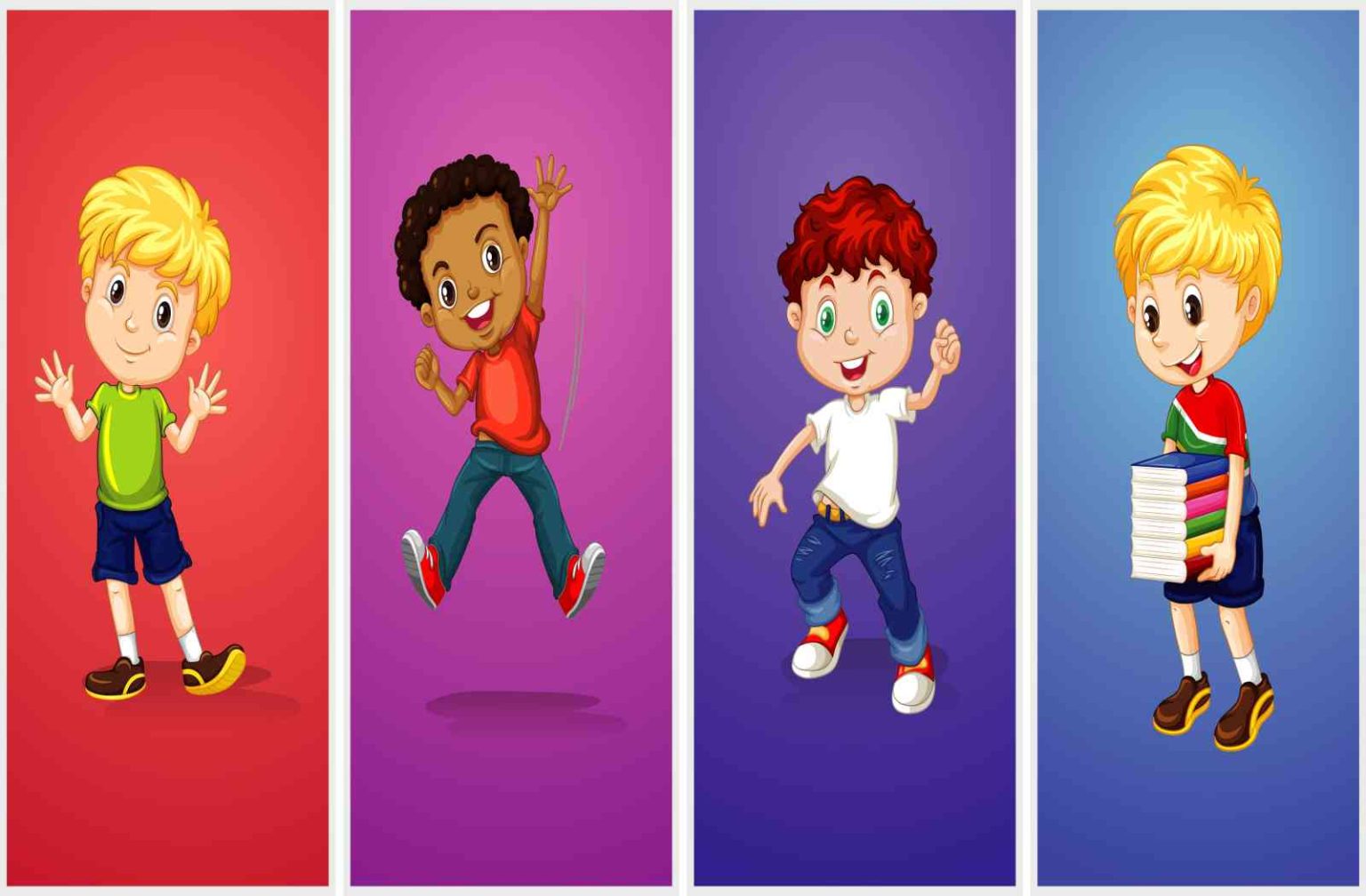Are you a fan of cartoons? We all are as we all have a child inside us, but do you know how they came into being? Cartoon animations have been around for decades but it wasn’t until the early 1900s that the concept started to take off and become popular. From the original cartoons to modern-day computer generated animations, they have steadily progressed over time. The history of cartoon animations is an interesting one because it has a lot to say about its evolution. The history is fascinating, from the creation of Animated Character drawings to their use within film and television.
The evolution of Animated Cartoons is closely linked to the development of cinema and its evolution as an artistic medium. Animation is a visual medium of expression. Animation has been around for quite a long time and it changed the way people perceive things. It’s proven to tell stories and convey emotions in a more vivid and visual way that many people have found interesting. Even though there are numerous ways to tell stories using animation and Animation Studies these days are expert in it, it seems that cartoons have an advantage over other kinds because of its influence on audiences worldwide.
Early History of Cartoon Animation:
When we look around our homes, educational places or workplace we see animation everywhere even if you don’t watch cartoons. All of us grew up watching these cartoons either Cinderella or Looney Toons. Now it’s time to dig into the early history of Cartoon Animations. In the era of 30,000 B.C – 1500 A.D Archeological evidence depicts that we’ve been trying to show motion through art since humans were able to sketch. There are some famous examples from ancient civilizations as well as from the European Renaissance. The Shahr-e Sukhteh is a bronze-age pottery bowl which shows the jumping of goats. In the 1600 – 1877 era during the Industrial Revolution in Europe and North America, people began experimenting with machines that could create moving images. Magic Lantern was known as a projector that has sheets of glass.
The Silent Era of 1900s – 1920s for Cartoon Animation
A number of hugely successful animators have contributed greatly to the development and popularity of animation as a form of entertainment. In which these two big names are included:
Stuart Blackton:
Humorous Phases of Funny Faces, an animated series created by J. Stuart Blackton in 1906, used this technique. In his short film Haunted Hotel, Blackton created one of the first stop-motion animations. Cohl’s style was based on Blackton’s, but he eliminated the more elaborate details. Cohl’s hand-drawn animation technique was a milestone in cinematic history. The early animation industry was based on the work of great cartoonists like Rube Goldberg, Bud Fisher and George Herriman. As animation became an art form, these artists began to outsource the design work while still being responsible for the overall concept.
Winsor McCay:
Winsor McCay was a celebrated cartoonist who achieved fame for his animated works Little Nemo in Slumberland (1911) and Gertie the Dinosaur (1914). They are expected to revolutionize the industry. McCay was one of the first animators to give his characters human personalities, making them able to move in a realistic fashion. McCay’s more works include The Sinking of Lusitania (1918), which Pat Sullivan later developed. It was Sullivan who recognized the genius of Otto Messmer, thereby bringing about a revolution in animation. Soon after Felix the cat’s introduction, animal cartoons began to follow his lead with their rounded heads and large eyes. This model was easy for animators to work with for multiple frames.
The Golden Age of Cartoon Animation 1930s – 1960s
Walt Disney:
Felix the Cat is often credited as being the original inspiration for many of early Walt Disney’s most famous cartoon characters, beginning with Oswald the Lucky Rabbit. Many people believe that Mickey Mouse was simply a copy of Oswald the Lucky Rabbit. However, Disney’s brilliance had not led an ear to it. When Walt Disney introduced sound-synchronized animation in his film Steamboat Willie (1928), it revolutionized the cartoon industry by adding a new level of realism that had been previously missing. In Flowers and Trees (1932), Disney utilized other revolutionary techniques, including animation in technicolor whereas it also used music in The Skeleton Dance. He also advanced his animation techniques with Old Mill (1937), using a three-plane camera to create movies that were more lifelike than he had been able to make before. Disney owed much of his success to the assistance of a long-time trusted companion, Ub Iwerks.
Snow White and the Seven Dwarfs (1937) was the first feature film that had all its drawings done by hand, making it unique among other animated films at its time. It was an incredible, cartoonish spectacle with as much drama and emotion as the medium of animation could convey. The Pixar-Disney corporation has produced several full-length animated films that represent the height of photographic realism. From Pinocchio (1940) through Bambi (1942), Disney’s series of animated feature films changed how audiences saw the medium. Walt Disney’s achievements in animation made him one of the most important figures in the history of animation.
The Fleischer Brothers:
Other filmmakers soon caught on to the idea that there was a lot of money to be made in film-making. While Disney was still in Kansas, the Fleischer Brothers perfected many sophisticated animation techniques. They were the first to perfect and popularize the technique of rotoscoping. A technique that includes making animated cartoons by drawing images over the frames of live-action film. From 1919 to 1929 almost ten years, the Fleischer brothers used rotoscoping in their series “Out of the Inkwell” which makes it worth watching. In his productions of Alice in Wonderland and its sequel Through the Looking-Glass, Disney struggled to bring real-life characters into his fantasy world. It wasn’t until 1964 that Disney mastered the technique he used in his classic musical fantasy Mary Poppins.
However, Max and Dave Fleischer took a different approach to cultivating the animation industry in contrast to Disney. The Fleischer brothers’ work had a more adult feel than Disney’s, with crowded and suggestive artwork in comparison to his simpler style. The persona of their characters were full of sensuality, like Betty Boop. These films had a widespread effect on the way Americans viewed cartoons, but they eventually produced movies that were less extreme and produced by Disney. Some of the films they produced include Gulliver’s Travels (1939) and Mr. Bug Goes to Town (1941). However, Fleischer Studio’s most famous work is Popeye—a spin-off from Betty Boop that was released in 1933. After the release of Baby Wants a Bottleship, the Fleischer studio sold his studio to Famous Studios.
Tex Avery:
Warner Bros. took the style of Fleischer Studios’ animation, which was already edgy and chaotic, to a new level. Some of the veteran animators who had worked at Disney Studios, such as Rudolph Ising and Fritz Freleng, started their own company—Warner Bros. The studio began to win prominence in the industry only when young, eccentric Tex Avery joined its ranks. Avery was a gifted entrepreneur who discovered and fostered the talents of many artists, helping to make them famous. The names that are included: Chuck Jones, Bob Clampett, and Bob Cannon. A Wild Hare (1940), for instance, is a great example of this style’s speed and quirkiness. The characters are fast-talking and aggressive at sometimes. These characters; Daffy Duck, Tweety Bird, porky pig, road runner and Sylvester the cat among them, evolved from the first ones into their later counterparts. Avery left Warner Brothers to join Metro-Goldwyn-Mayer’s studio. This is where he became most known for his anarchic and chaotic style of animation, particularly in films like Red Hot Riding Hood (1943) and Bad Luck Blackie (1949). As techniques for making cartoons were improved, animators had more freedom to create the characters and situations they wanted. Animation became increasingly important to children, who took great pleasure in watching it.
The American television Era 1950s – 1980s
Animation adapted to television, entering a new market and gaining popularity with home audiences. The rising popularity of cartoons as a form of entertainment led the average American family to choose them over other entertainment sources. Limited animation was introduced to television by the major studios in the 1960s, who used it for making animated series. In the mid-1980s, cartoons were a common staple of television programming.
In their prime-time debut, the Flintstones were television’s first animated series. Yogi Bear, which was produced by Hanna-Barbera, came out almost exactly after Flintstones and enjoyed greater popularity. In addition to the popularity of cartoons for children and families, there has been a corresponding increase in adult-oriented animated sitcoms. The Simpsons was the most popular television program at that time. In 2009, the animated sitcom The Simpsons surpassed the western Gunsmoke in the amount of being loved by the people.
The Modern American Era
During the period from 1980 to 2014, 2D Animation and 3D CGI animation made enormous strides. It has had a revolutionary impact on the American animation industry. The Walt Disney Company, in the 1990s, made a series of hit films based on traditional folk stories. The following are some of the most memorable animated films:
- The Lion King
- The Princess and the Frog
- Beauty and the Beast
- Tarzan
- Aladdin
- Mulan
- Pocahontas
- Bambi




